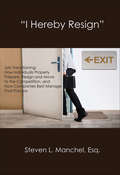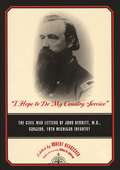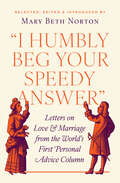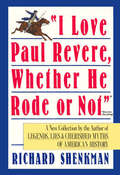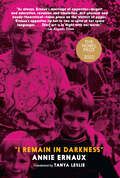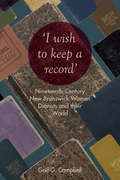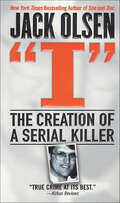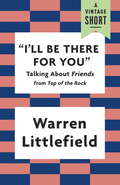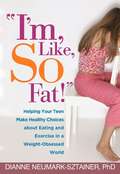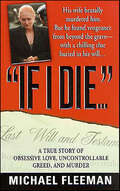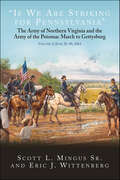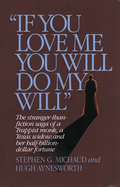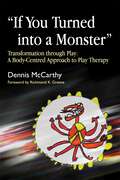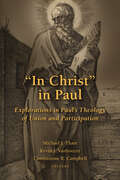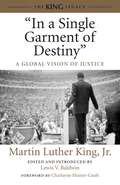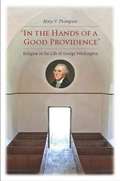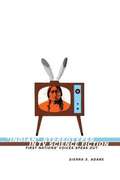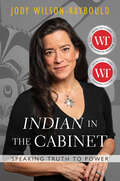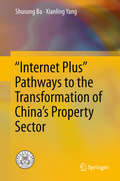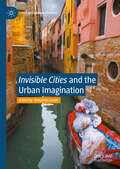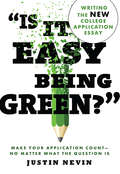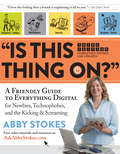- Table View
- List View
"I Hereby Resign": Job Transitioning: How Individuals Properly Prepare, Resign And Move To The Competition, And How Companies Best Manage That Proc
by Steven L. ManchelA concise, practical guide to problem-free job transitions for employees, recruiters, and business leaders: “Incredibly user-friendly.” —James B. Adelman, Esq., Senior Vice President, General Counsel, Commonwealth Financial NetworkThe fundamental purpose of this book is to provide a useful how-to guide for people who are deciding whether to leave their current employer and join a direct competitor, and for companies involved in the hiring and recruiting process. Many employees are subject to so-called Non-Competition Agreements and, consequently, already understand that there are significant risks, legal and business, when transitioning jobs. However, what most do not appreciate is that there are a host of laws and protocols, having nothing to do with whether an employment contract exists, that govern the way one may properly prepare to leave and the manner in which the hiring company can bring the new hire on board. Every year millions voluntarily leave their companies to join a direct competitor and millions more explore the possibility. All such undertakings, even if the ultimate decision is not to leave, bring legal and litigation and business risks—risks that can result in large damage awards, injunction orders, and general corporate disruption and turmoil. This book by an experienced attorney offers important guidance and practical tips on avoiding and minimizing those risks.“This book should find its way to the desk of anyone who is contemplating a transition to a competing firm, now or in the future. It is also a ‘must-read’ for all organizations involved in lateral hiring, as it explains the ‘do’s’ and ‘don’ts’ of talent acquisition.” —Boris Groysberg, Richard P. Chapman Professor of Business Administration at Harvard Business School
"I Hope to Do My Country Service": The Civil War Letters of John Bennitt, M.D., Surgeon, 19th Michigan Infantry
by William M. Anderson Robert BeaseckerIn 1862 at the age of thirty-two, Centreville, Michigan, physician John Bennitt joined the 19th Michigan Infantry Regiment as an assistant surgeon and remained in military service for the rest of the war. During this time Bennitt wrote more than two hundred letters home to his wife and daughters sharing his careful and detailed observations of army life, his medical trials in the field and army hospitals, dramatic battles, and character sketches of the many people he encountered, including his regimental comrades, captured Confederates, and local citizens in southern towns. Bennitt writes about the war's progress on both the battlefield and the home front, and also reveals his changing view of slavery and race.Bennitt traces the history of the 19th Michigan Infantry, from its mustering in Dowagiac in August 1862, its duty in Kentucky and Tennessee, its capture and imprisonment by Confederate forces, its subsequent exchange and reorganization, its participation in the Atlanta and the Carolinas campaigns, its place in the Grand Review in Washington, and the final mustering out in Detroit in June 1865. John Bennitt's significant collection of letters sheds light not only on the Civil War but on the many aspects of life in a small Michigan town. Although a number of memoirs from Civil War surgeons have been published in the last decade, "I Hope to Do My Country Service" is the first of its kind from a Michigan regimental surgeon to appear in more than a century.
"I Humbly Beg Your Speedy Answer": Letters on Love and Marriage from the World’s First Personal Advice Column
by Mary Beth NortonA fascinating collection of questions and answers—about courtship, marriage, love, and sex—from a seventeenth-century periodical The Athenian Mercury—a one-page, two-sided periodical published in 1690s London—included the world&’s first personal advice column. Acclaimed historian and Pulitzer Prize–finalist Mary Beth Norton&’s &“I Humbly Beg Your Speedy Answer&” is a remarkable collection of questions and answers drawn from this groundbreaking publication.In these exchanges, anonymous readers look for help with their most intimate romantic problems—about courting, picking a spouse, getting married, securing or avoiding parental consent, engaging in premarital sex and extramarital affairs, and much more. Spouses ask how to handle contentious marriages and tense relationships with in-laws. Some correspondents seek ways to ease a conscience troubled by romantic and sexual misbehavior. The lonely wonder how to meet a potential partner—or how to spark a warmer relationship with someone they already have an eye on. And both men and women inquire about how to extract themselves from relationships turned sour. Many of these concerns will be familiar to readers of today&’s advice columns. But others are delightfully strange and surprising, reflecting forgotten social and romantic customs and using charmingly unfamiliar language in which, for example, &“kissing is a luscious diet,&” a marriage might provide &“much love and moderate conveniency,&” and an &“amorous disposition&” can lead to trouble.Delightful and entertaining, &“I Humbly Beg Your Speedy Answer&” provides a unique, intriguing, and revealing picture of what has—and hasn&’t—changed over the past three centuries when it comes to love, sex, and relationships.
"I Love Paul Revere, Whether He Rode Or Not"
by Richard ShenkmanProvocative and amusingly heretical, "I Love Paul Revere, Whether He Rode or Not" (a quote attributed to Warren Harding) offers eye-opening revelations debunking long-held American legends.
"I Love Paul Revere, Whether He Rode Or Not": A Collection of Legends, Lies, & Cherished Myths of American
by Richard ShenkmanProvocative and amusingly heretical, "I Love Paul Revere, Whether He Rode or Not" (a quote attributed to Warren Harding) offers eye-opening revelations debunking long-held American legends.
"I Remain in Darkness"
by Annie ErnauxAn extraordinary evocation of a grown daughter’s attachment to her mother, and of both women’s strength and resiliency. "I Remain in Darkness" recounts Annie’s attempts first to help her mother recover from Alzheimer’s disease, and then, when that proves futile, to bear witness to the older woman’s gradual decline and her own experience as a daughter losing a beloved parent. "I Remain in Darkness" is a new high water mark for Ernaux, surging with raw emotional power and her sublime ability to use language to apprehend her own life’s particular music.
"I wish to keep a record": Nineteenth-Century New Brunswick Women Diarists and Their World
by Gail CampbellNineteenth-century New Brunswick society was dominated by white, Protestant, Anglophone men. Yet, during this time of state formation in Canada, women increasingly helped to define and shape a provincial outlook. I wish to keep a record is the first book to focus exclusively on the life-course experiences of nineteenth-century New Brunswick women. Gail G. Campbell offers an interpretive scholarly analysis of 28 women’s diaries while enticing readers to listen to the voices of the diarists. Their diaries show women constructing themselves as individuals, assuming their essential place in building families and communities, and shaping their society by directing its outward gaze and envisioning its future. Campbell’s lively analysis calls on scholars to distinguish between immigrant and native-born women and to move beyond present-day conceptions of such women’s world. This unique study provides a framework for developing an understanding of women's worlds in nineteenth-century North America.
"I": The Creation of a Serial Killer
by Jack OlsenThe prize-winning, bestselling journalist provides a fascinating glimpse into the mind of “The Happy Face Killer” in the serial murderer’s own words . . .In February 1990, Oregon State Police arrested John Sosnovke and Laverne Pavlinac for the vicious rape and murder of Taunja Bennet, a troubled twenty-three-year-old barfly who had a mild intellectual disability since birth. There was just one problem. They had the wrong people.And the real killer wasn’t about to let anyone take credit for his kill. Keith Hunter Jesperson was a long-haul truck driver and the murderer of eight women, including Taunja Bennet. As the case wound through police precincts and courts—ending in life sentences for both Sosnovke and Pavlinac—Jesperson began a twisted one-man campaign to win their release. To the editors of newspapers and on the walls of highway rest stops, Jesperson scribbled out a series of taunting confessions. At the end of each admission, Jesperson drew a happy face, earning for himself the grisly sobriquet “The Happy Face Killer.”Based on access to interviews, diaries, court records, and the criminal himself, I: The Creation of a Serial Killer is Jesperson’s chilling story. It chronicles his evolution from angry child to sociopathic murderer, from tormentor of animals to torturer of women. It is also the story of the fate that befell him after two innocent citizens were imprisoned four years for one of his killings.In I: The Creation of a Serial Killer, Edgar Award winner Jack Olsen lets Jesperson tell his story in his own words, offering unprecedented insight into the twisted thought process of a serial murderer.
"I'll Be There for You"
by Warren LittlefieldAn eBook short.A behind-the-scenes look at Friends, one of the most popular TV shows of all time--a wide-ranging interview with the cast and creators, excerpted from Top of the Rock, by former NBC President of Entertainment Warren LittlefieldIt was a little show originally called Six of One, whose pilot only tested decently with audiences--but all of that would soon change. "I'll Be There for You" presents a colorful, funny, and enlightening oral history drawn from the actors and creators of Friends. Outlining the whole history of the show, from first episode to last, including testimonials straight from the studio floor, this selection reveals the personal side of the "Shakespearean soap opera," including how the actors dealt with fame, helped to create their roles, negotiated and grew together as one family, and (of course) how Joey became Joey.
"I'm Not a Racist, But . . .": The Moral Quandary of Race
by Lawrence BlumNot all racial incidents are racist incidents, Lawrence Blum says. "We need a more varied and nuanced moral vocabulary for talking about the arena of race. We should not be faced with a choice of 'racism' or nothing." Use of the word "racism" is pervasive: An article about the NAACP's criticism of television networks for casting too few "minority" actors in lead roles asks, "Is television a racist institution?" A white girl in Virginia says it is racist for her African-American teacher to wear African attire. Blum argues that a growing tendency to castigate as "racism" everything that goes wrong in the racial domain reduces the term's power to evoke moral outrage. In "I'm Not a Racist, But . . .", Blum develops a historically grounded account of racism as the deeply morally-charged notion it has become. He addresses the question whether people of color can be racist, defines types of racism, and identifies debased and inappropriate usages of the term. Though racial insensitivity, racial anxiety, racial ignorance and racial injustice are, in his view, not "racism," they are racial ills that should elicit moral concern. Blum argues that "race" itself, even when not serving distinct racial malfeasance, is a morally destructive idea, implying moral distance and unequal worth. History and genetic science reveal both the avoidability and the falsity of the idea of race. Blum argues that we can give up the idea of race, but must recognize that racial groups' historical and social experience has been shaped by having been treated as if they were races.
"I'm, Like, SO Fat!"
by Dianne Neumark-SztainerIt's hard to decide which is more frightening the "food" teenagers enjoy, or the things they say about their bodies. Whether it's your son's passion for chips and soda or your daughter's announcement that she "feels fat," kids' attitude about how they look and what they should eat often seem devoid of common sense. In a world where television and school cafeterias push super-sized sandwiches while magazines feature pencil-thin models, many teens feel pressured to starve themselves and others eat way too much. Blending her experience as the mother of four with results from a survey of nearly 5,000 teens, Dr. Diane Neumark-Sztainer shows you how to respond constructively to "fat talk," counteract negative media messages, and give your kids the straight story about nutrition and calories, the dangers of dieting, and eating right when they're away from home. Full of examples illustrating the challenges teens face today, this upbeat and insightful book is packed with great ideas that will help kids everywhere feel better about their looks and make healthier choices about eating and exercise.
"If I Die . . .": A True Story of Obsessive Love, Uncontrollable Greed, and Murder (St. Martin's True Crime Library)
by Michael FleemanHe'd been shot in the head, decapitated, and set on fire. Who could have turned on the real-estate ace with such bloodthirsty fury? Even before the remains were found, circumstantial evidence was building against Rudin's 52-year-old wife, Margaret, who stood to inherit a handsome share of her husband's fortune. Rudin's friends also suspected Margaret, and the victim has thought that his wife was trying to poison him when he was alive. Then a chilling caveat was discovered in Rudin's living trust: should he die under violent circumstances, an investigation should be conducted. By the time authorities closed in on Margaret Rudin she'd disappeared. It would take two and a half years to hunt the Black Widow down, and to discover the secrets at the heart of poisonous marriage...Now, reporter Michael Fleeman delivers a startling glimpse into the mind of a woman who would stop at nothing to get what she wanted. Fleeman also details the relentless pursuit of justice that would lead authorities from the glamorous facade of Las Vegas to a squalid apartment on the outskirts of Boston, to hold the remorseless wife accountable for her shocking crimes.
"If We Are Striking for Pennsylvania", Volume 2: The Army of Northern Virginia and the Army of the Potomac March to Gettysburg
by Eric J. Wittenberg Scott L. Mingus Sr.Award-winning authors Scott L. Mingus Sr. and Eric J. Wittenberg are back with the second and final installment of “If We Are Striking for Pennsylvania”: The Army of Northern Virginia’s and Army of the Potomac’s March to Gettysburg. This compelling and bestselling study is the first to fully integrate the military, political, social, economic, and civilian perspectives with rank-and-file accounts from the soldiers of both armies during the inexorably march north toward their mutual destinies at Gettysburg. Gen. Robert E. Lee’s bold movement north, which began on June 3, shifted the war out of the central counties of the Old Dominion into the Shenandoah Valley, across the Potomac, and beyond. The first installment (June 3-22, 1863) carried the armies through the defining mounted clash at Battle of Brandy Station, after which Lee pushed his corps into the Shenandoah Valley and achieved the magnificent victory at Second Winchester on his way to the Potomac. Caught flat-footed, Maj. Gen. Joseph Hooker used his cavalry to probe the mountain gaps, triggering a series of consequential mounted actions. The current volume (June 23-30) completes the march to Gettysburg and details the actions and whereabout of each component of the armies up to the eve of the fighting. The large-scale maneuvering in late June prompted General Hooker to move his Army of the Potomac north after his opponent and eventually above the Potomac, where he loses his command to the surprised Maj. Gen. George G. Meade. Jeb Stuart begins his controversial and consequential ride that strips away the eyes and ears of the Virginia army. Throughout northern Virginia, central Maryland, and south-central Pennsylvania, civilians and soldiers alike struggle with the reality of a mobile campaign and the massive logistical needs of the armies. Untold numbers of reports, editorials, news articles, letters, and diaries describe the passage of the long martial columns, the thunderous galloping of hooves, and the looting, fighting, suffering, and dying. Mingus and Wittenberg mined hundreds of primary accounts, newspapers, and other sources to produce this powerful and gripping saga. As careful readers will quickly discern, other studies of the runup to Gettysburg gloss over most of this material. It is simply impossible to fully grasp and understand the campaign without a firm appreciation of what the armies and the civilians did during the days leading up to the fateful meeting at the small crossroads town in Adams County, Pennsylvania.
"If We Return, We Will Be Killed": Consolidation of Ethnic Cleansing in Darfur, Sudan
by Human Rights WatchSince February 2003, in the context of a military counter-insurgency campaign against two rebel groups, the Sudan Liberation Army (SLA) and the Justice and Equality Movement (JEM) Sudanese government forces and government-backed ethnic militias known as "Janjaweed" have committed war crimes, crimes against humanity and "ethnic cleansing" in the Darfur region of Sudan. Government forces and militias have systematically targeted civilian communities that share the same ethnicity as the rebel groups, killing, looting, raping, forcibly displacing and destroying hundreds of villages. For their part, the rebel groups have abducted civilians, attacked police stations and other government institutions, and raided and looted substantial numbers of livestock and commercial goods from trucks and vehicles traveling on roads in Darfur. The rebels have also been responsible for some direct and indiscriminate attacks that have resulted in deaths and injuries to civilians and for the use of child soldiers. This report documents and analyzes the continuing violence by all parties to the conflict, obstacles to return and to the reversal of ethnic cleansing, the government's efforts to end impunity and the international community's response so far to the ongoing human rights crisis in Darfur.
"If You Love Me, You Will Do My Will": The Stranger-Than-Fiction Saga of a Trappist Monk, a Texas Widow, and Her Half-Billion-Dollar Fortune
by Stephen G. Michaud Hugh AynesworthSome images in this ebook are not displayed owing to permissions issues.
"If You Turned into a Monster": A Body-Centred Approach to Play Therapy
by Dennis MccarthyDraw me a picture of what you would look like if you turned into a monster.' Dennis McCarthy's work with distressed or traumatized children begins with an exercise that is simple but very effective: he invites the child to communicate with him in their own way, through the non-verbal language of play. Using case studies from his clinical experience and with numerous children's monster drawings, McCarthy lets the meaningful self-expression of the child take centre stage. He demonstrates that being allowed to play, move and draw impulsively and creatively in the supportive presence of the therapist is in fact the beginning of the therapeutic process. These activities are shown to be more therapeutic for the child in practical terms than the interpretation of the clues it provides about the child's state of mind. This very accessible book will be inspiring reading for play therapists and other professionals working therapeutically with young children and their families.
"In Christ" in Paul: Explorations in Paul's Theology of Union and Participation
by Kevin J. Vanhoozer Constantine R. Campbell Michael J. ThateNineteen biblical scholars and theologians in this volume explore the notions of union and participation within Pauline theology, teasing out the complex web of meaning conveyed through Paul's theological vision of being "in Christ." With essays that investigate Pauline theology and exegesis, ex-amine highlights from reception history, and offer deep theological reflection, this exemplary multidisciplinary collection charts new ground in the scholarly understanding of Paul's thought and its theological implications.
"In a Single Garment of Destiny": A Global Vision of Justice (King Legacy #8)
by Martin Luther King Jr. Lewis V. Baldwin Charlayne Hunter-GaultAn unprecedented and timely collection that captures the global vision of Dr. King--in his own words. Too many people continue to think of Dr. King only as "a southern civil rights leader" or "an American Gandhi," thus ignoring his impact on poor and oppressed people around the world. "In a Single Garment of Destiny" is the first book to treat King's positions on global liberation struggles through the prism of his own words and activities. From the pages of this extraordinary collection, King emerges not only as an advocate for global human rights but also as a towering figure who collaborated with Eleanor Roosevelt, Albert J. Luthuli, Thich Nhat Hanh, and other national and international figures in addressing a multitude of issues we still struggle with today--from racism, poverty, and war to religious bigotry and intolerance. Introduced and edited by distinguished King scholar Lewis Baldwin, this volume breaks new ground in our understanding of King.
"In the Hands of a Good Providence"
by Mary V. ThompsonAttempts by evangelical Christians to claim Washington and other founders as their own, and scholars' ongoing attempts to contradict these claims, are nothing new. Particularly after Washington was no longer around to refute them, legends of his Baptist baptism or secret conversion to Catholicism began to proliferate. Mount Vernon researcher Mary Thompson endeavors to get beyond the current preoccupation with whether Washington and other founders were or were not evangelical Christians to ask what place religion had in their lives. Thompson follows Washington and his family over several generations, situating her inquiry in the context of new work on the place of religion in colonial and postrevolutionary Virginia and the Chesapeake.Thompson considers Washington's active participation as a vestryman and church warden as well as a generous donor to his parish prior to the Revolution, and how his attendance declined after the war. He would attend special ceremonies, and stood as godparent to the children of family and friends, but he stopped taking communion and resigned his church office. Something had changed, but was it Washington, the church, or both? Thompson concludes that he was a devout Anglican, of a Latitudinarian bent, rather than either an evangelical Christian or a Deist. The meaning of this description, Thompson allows, when applied to eighteenth-century Virginia gentlemen, is far from self-evident, leaving ample room for speculation.
"Indian" Stereotypes in TV Science Fiction: First Nations' Voices Speak Out
by Sierra S. AdareAccording to an early 1990s study, 95 percent of what college students know about Native Americans was acquired through the media, leading to widespread misunderstandings of First Nations peoples. Sierra Adare contends that negative "Indian" stereotypes do physical, mental, emotional, and financial harm to First Nations individuals.<P><P>At its core, this book is a social study whose purpose is to explore the responses of First Nations peoples to representative "Indian" stereotypes portrayed within the TV science fiction genre. Participants in Adare's study viewed episodes from My Favorite Martian, Star Trek, Star Trek: Voyager, Quantum Leap, The Adventures of Superman, and Star Trek: The Next Generation. Reactions by viewers range from optimism to a deep-rooted sadness. The strongest responses came after viewing a Superman episode's depiction of an "evil medicine man" who uses a ceremonial pipe to kill a warrior. The significance of First Nations peoples' responses and reactions are both surprising and profound. After publication of "Indian" Stereotypes in TV Science Fiction, ignorance can no longer be used as an excuse for Hollywood's irresponsible depiction of First Nations peoples' culture, traditions, elders, religious beliefs, and sacred objects.
"Indian" in the Cabinet: Speaking Truth to Power
by Jody Wilson-RaybouldA compelling political memoir of leadership and speaking truth to power by one of the most inspiring women of her generation Jody Wilson-Raybould was raised to be a leader. Inspired by the example of her grandmother, who persevered throughout her life to keep alive the governing traditions of her people, and raised as the daughter of a hereditary chief and Indigenous leader, Wilson-Raybould always knew she would take on leadership roles and responsibilities. She never anticipated, however, that those roles would lead to a journey from her home community of We Wai Kai in British Columbia to Ottawa as Canada’s first Indigenous Minister of Justice and Attorney General in the Cabinet of then newly elected prime minister, Justin Trudeau. Wilson-Raybould’s experience in Trudeau’s Cabinet reveals important lessons about how we must continue to strengthen our political institutions and culture, and the changes we must make to meet challenges such as racial justice and climate change. As her initial optimism about the possibilities of enacting change while in Cabinet shifted to struggles over inclusivity, deficiencies of political will, and concerns about adherence to core principles of our democracy, Wilson-Raybould stood on principle and, ultimately, resigned. In standing her personal and professional ground and telling the truth in front of the nation, Wilson-Raybould demonstrated the need for greater independence and less partisanship in how we govern. “Indian” in the Cabinet: Speaking Truth to Power is the story of why Wilson-Raybould got into federal politics, her experience as an Indigenous leader sitting around the Cabinet table, her proudest achievements, the very public SNC-Lavalin affair, and how she got out and moved forward. Now sitting as an Independent Member in Parliament, Wilson-Raybould believes there is a better way to govern and a better way for politics—one that will make a better country for all.
"Internet Plus" Pathways to the Transformation of China's Property Sector
by Shusong Ba Xianling YangThis book discusses in detail the impact of the Internet on the real-estate brokerage industry. It starts by tracing the history of the industry in America, and then goes on to present case studies of successful online brokerage companies and startups, and to evaluate future trends from the perspectives of investors as well as researchers. It explains how the Internet can transform an industry, enabling readers to spot potential investment opportunities.
"Invisible Cities" and the Urban Imagination (Literary Urban Studies)
by Benjamin LinderIn 1972, Italo Calvino published Invisible Cities, a literary book that masterfully combines philosophy and poetry, rigid structure and free play, theoretical insight and glittering prose. The text is an extended meditation on urban life, and it continues to resonate not only among literary scholars, but among social scientists, architects, and urban planners as well. To commemorate the 50th anniversary of Invisible Cities, this collection of essays serves as both an appreciation and a critical engagement. Drawing from a wide array of disciplinary perspectives and geographical contexts, this volume grapples with the theoretical, pedagogical, and political legacies of Calvino’s work. Each chapter approaches Invisible Cities not only as a novel but as a work of evocative ethnography, place-writing, and urban theory. Fifty years on, what can Calvino’s dreamlike text offer to scholars and practitioners interested in actually existing urban life?
"Is It Easy Being Green?"
by Justin NevinMore and more universities and colleges are looking beyond grade point averages and standardized test scores to choose their incoming freshman. What criteria do these institutions of higher education use as their litmus test--the college application essay. But will your average high school essay do the job? When competing against thousands of qualified candidates a college applicant needs more than an introduction, three paragraphs, and a conclusion in their writer's tool belt: they need the skills to stand out from the crowd. "Is It Easy Being Green?": Writing the NEW College Application Essay offers every applicant the skills needed to write a powerful and successful application essay. Using real-life examples and testimonials "Is It Easy Being Green?" moves away from a strictly academic point of view, and uses creative writing techniques-memoir/personal essay genre in particular-to teach students how to write engaging and effective application essays. Centering on a narrative and lyrical balance, "Is It Easy Being Green?" is written in an approachable and easy-to-understand style.
"Is This Thing On?": A Friendly Guide to Everything Digital for Newbies, Technophobes, and the Kicking & Screaming
by Abby StokesLike a personal trainer for the digital age, Abby Stokes is the hand-holding, motivating expert that newbies—specifically older newbies—turn to when they want to become digitally literate. And her book, Is This Thing On?, is as smart, comprehensive, reassuring, and jargon-free as she is: the epitome of user-friendly. <P><P>And it is now completely revised and updated to keep pace with the fast-changing digital landscape, covering tablets, apps, video streaming, social media, and much more. <P>With the skill and assurance of a teacher who for over 20 years has personally taught computer skills to thousands of seniors and technophobes, Stokes covers it all: How to choose, buy, and start using the computer or tablet that’s just right for you, plus how to set everything up for maximum comfort and safety. How to connect to the Internet, sign up for email, understand and use search engines, and get started with essential skills like word processing and text messaging. How to choose, buy, and start using a smartphone. How to take and share digital photographs and videos. How to discover online communities and participate in social media like Facebook, Instagram, Pinterest, Twitter, YouTube, and blogs. How to explore the world of apps, online music, streaming movies, and ebooks. And, importantly, online security— including what to do when things go wrong. Appendices include both Apple and PC keyboard shortcuts and 200 recommended websites and 100 apps; there are FAQs at the end of each chapter and tips and tricks throughout. <P> An all-new companion website—AskAbbyStokes.com—will include video tutorials explaining the latest technologies.
